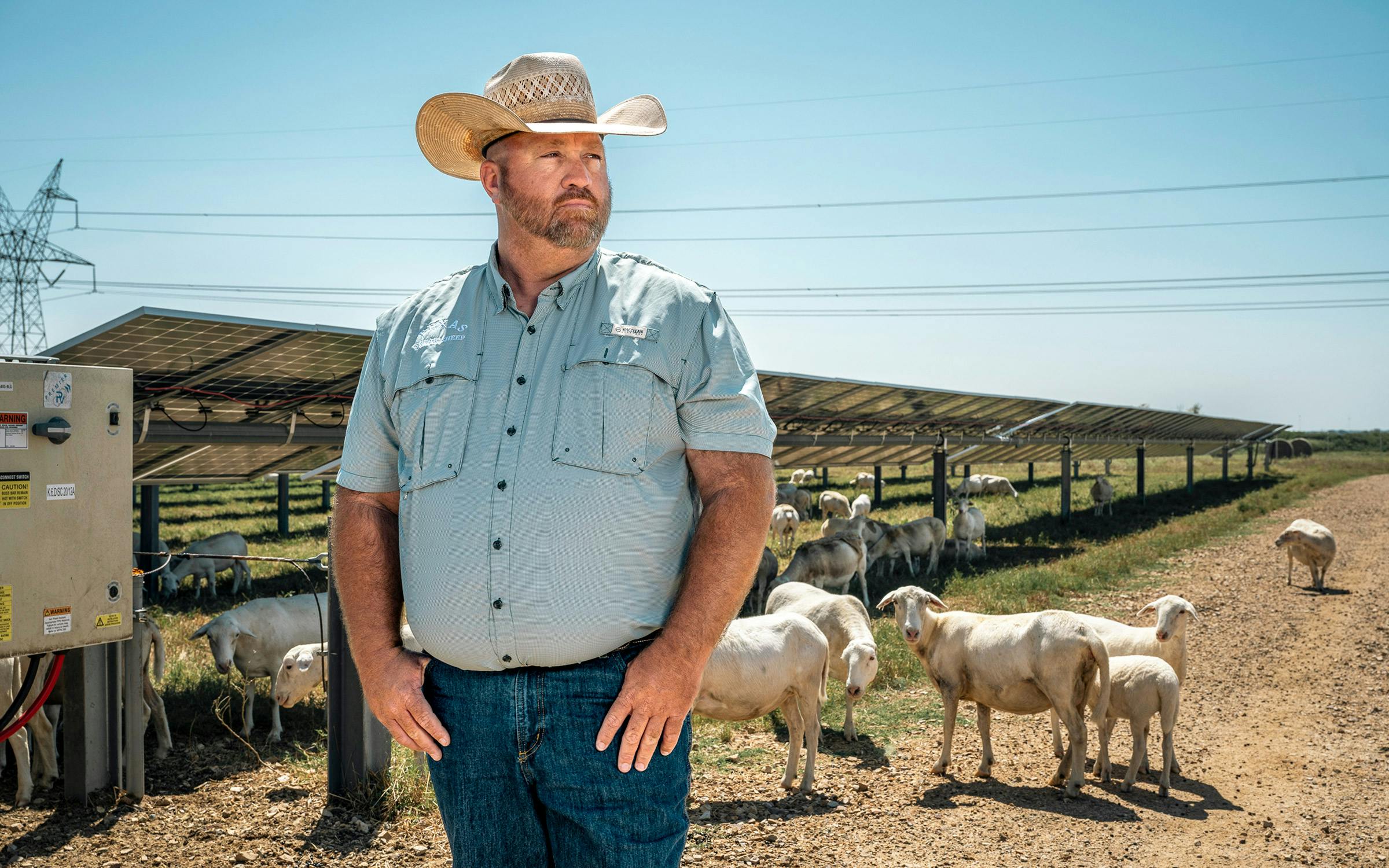JR Howard, who is 43, owns Texas Solar Sheep, a company whose grazing herds control vegetation on solar farms. It is based in Mount Vernon, in East Texas.
I grew up in Sterling City, in West Texas, working on ranches in the summers. Then I spent most of my career in trucking logistics. My family had always run a couple hundred sheep, and about four years ago, a friend said, “Y’all better look into solar grazing.” I didn’t know what the heck he was talking about, but I started researching. Now we’ve got a little more than six thousand sheep at eleven sites, with nine more locations contracted to start soon. We’ll probably double in size this year, both by acreage and number of sheep. Lately I’ve gotten so many calls that I’ve had to turn down work.
We replace mowers with sheep. Solar farms need to keep tall grass from shading the panels, which lowers production and causes fire hazards. We still use mowers, but 70 to 80 percent of the work is done by livestock. Sheep are ideal because they fit under the panels—cattle are too big—and unlike goats, they won’t jump on the panels or chew them. After a heavy rain, sometimes we can’t get machines out there, but the sheep will keep eating. They eat the johnson grass first; that’s their favorite. It can grow to six or seven feet, and sheep control it effectively. But they won’t eat doveweed or thistle. If I could figure out something that’d eat thistle, I’d be a millionaire.


The sheep industry has been going downhill my whole life, but this is an opportunity to put sheep back on the land. Our business is a contractor for solar energy companies. When those companies lease land from farmers in Texas, they hire us to provide the sheep and contain vegetation. Our smallest site is five hundred acres and the biggest is four thousand. In addition to solar grazing, we grow some hay and wheat, and some of the sheep are sold for meat.
Dorper and Katahdin sheep are the breeds we use, and we cross the two. They’re hair sheep that shed every spring, so you don’t have to shear them. Woolly sheep could get caught on the equipment. One challenge is that not many veterinarians are left who have sheep experience, especially east of I-35, where many of our sites are. Most of the care we can do ourselves now.
The biggest change for a lot of farmers is that this is a service business; you’re working for the customer. You’ve got to follow lots of rules and safety regulations and wear a hard hat, a safety vest. It’s not for everyone.
Right now we’ve got thirteen employees, and I could use another ten. They move the sheep around, do some mowing, haul water—a little bit of everything. My wife, Kellye, and our boys, Hunter and Carter, are a huge help. When we started, in 2020, I just about killed ’em, doing it all on our own.
This article originally appeared in the November 2024 issue of Texas Monthly with the headline “JR Howard, Solar Sheep Farmer.” Subscribe today.

